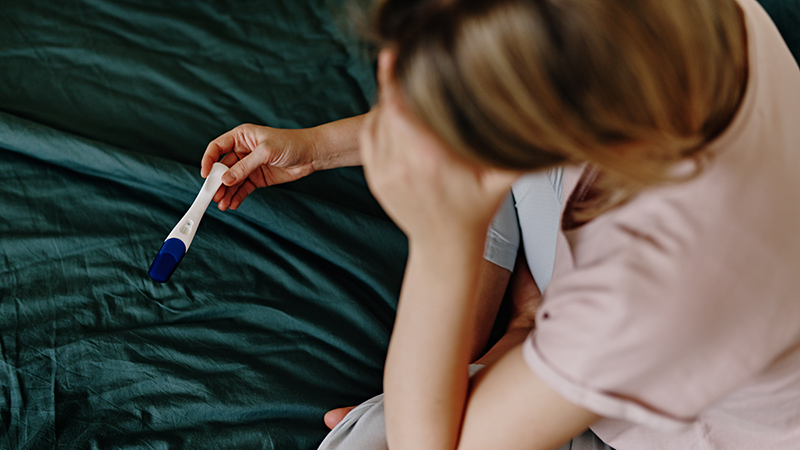Profile
Dr. Winuthayanon's, research involves the multiple types of cells in the female reproductive tract that work in concert to provide an optimal microenvironment for gametes (eggs and sperm) and embryos to establish a successful pregnancy. At Winuthayanon Lab, they focus on studying how ovarian steroid hormones (estrogen and progesterone) affect fertility during sperm migration, fertilization, embryo development, and embryo transport within the female reproductive tract. Dr. Winuthayanon's research uses genetic-engineered mouse models to dissect the molecular mechanisms and functional requirement of estrogen and progesterone signals through their classical nuclear receptors (estrogen receptor; ESR1 and progesterone receptor; PGR) during early pregnancy. Her research aims to provide fundamental knowledge in reproductive biology during early pregnancy as well as potential contraceptive targets for women and therapeutic approaches for infertility in humans.
Academic Information
Office
1030 Hitt Street
NextGen Precision Health Building 3015
Columbia, MO 65211
United States
Research Interests
- Steroid hormone (estrogen and progesterone) actions in the oviduct (Fallopian tubes) during sperm transport, fertlization, preimplantation embryo development and transport
- Non-hormonal contraceptive development
Areas of Expertise
- Female Reproductive Biology
- Oviduct Biology
- Steroid hormone actions
- Non-Hormonal Contraceptive Development
- Semen Liquefaction
Education & Training
Degrees
2009 PhD, Mahidol University
2002 BSN, Mahidol University
Awards & Honors
Funding
- NIH R01HD108198 (04/01/22 – 03/31/27)
- NIH R01HD097087 (03/12/19 – 02/29/24)
- NIH X01HD106634 (approved 07/23/21)
- NIH X01HD104425 (approved 08/07/20)
Professional Societies
- 2012–present The Endocrine Society
- 2010–present Society for the Study of Reproduction
In the News
Publications
- Finnerty RM, Carulli DJ, Hedge A, Wang Y, Baodu F, Winuthayanon S, Cheng J, and Winuthayanon W*. (2024)
Multi-omics analyses and machine learning prediction of oviductal responses in the presence of gametes and embryos.
eLIFE. 13:RP100705. - Stephens KK, Finnerty RM, Grant DG, Winuthayanon S, Martin-Deleon PA, and Winuthayanon W*. (2024)
Proteomic Analysis and In Vivo Visualization of Extracellular Vesicles from Mouse Oviducts During Pre-Implantation Embryo Development.
FASEB J. 38:e70035. - Erickson JA, Jimmidi R, Anamthathmakula P, Qin X, Wang J, Gong L, Park, J, Koolpe G, Tan C, Matzuk MM, Li F, Chamakuri S, and Winuthayanon W*. (2024)
Synthesis and optimization of prostate specific antigen.
ACS Med Chem Lett. 15:1526-1532. - McGlade EA, Mao J, Stephens KK, Maddison LA, Bernhardt ML, DeMayo FJ, Lydon JP, and Winuthayanon W*. (2024).
Generation of oviductal glycoprotein 1 Cre mouse model for the study of secretory epithelial cells of the oviduct.
Endocrinology. bqae070. - Finnerty RM, Carulli EM, Bernhardt ML, Maddison LA, and Winuthayanon W*. (2024).
Deletion of Kallikrein-related peptidases (Klks) has no effect on fertility in mice.
microPublication Biology. 10.17912/micropub.biology.001070. - McGlade EA, Stephens KK, Winuthayanon S, Anamthathmakula P, Holtzman MJ, and Winuthayanon W*. (2024)
Classical estrogen signaling in ciliated epithelial cells of the oviduct is nonessential for fertility in female mice.
Endocrinology. 165: 1-11. - Rizo JA, Davenport KM, Winuthayanon W, Spencer TE, Kelleher AM (2023)
Estrogen receptor alpha (ESR1) regulates uterine epithelial lineage specification and homeostasis.
iScience. 26: 107568. - Anamthathmakula P, Erickson JA, and Winuthayanon W*.
(2022) Blocking human semen liquefaction as a novel contraceptive method by targeting prostate specific antigen (PSA) activity.
Biol Reprod. 106: 879–887. - Anamthathmakula P, Erickson JA, and Winuthayanon W*.
(2022) Blocking human semen liquefaction as a novel contraceptive method by targeting prostate specific antigen (PSA) activity.
Biol Reprod. 106: 879–887. - McGlade EA, Herrera GG, Stephens KK, Olsen SLW, Winuthayanon S, Guner J, Hewitt SC, Korach KS, DeMayo FJ, Lydon JP, Monsivais D, and Winuthayanon W*.
(2021) Cell-type specific analysis of physiological action of estrogen in mouse oviducts.
FASEB J. 35;e21563. - Hewitt SC, Carmona M, Foley G, Donoghue LJ, Lierz SL, Winuthayanon W, and Korach KS.
(2020) Peri- and post-pubertal estrogen exposures of female mice optimize uterine responses later in life.
Endocrinology. 161: 1-12. - Griffiths R, Pru C, Behura S, Cronrath A, McCallum M, Kelp N, Winuthayanon W, and Pru K.
(2020) AMPK is required for uterine receptivity and normal responses to steroid hormones.
Reproduction. 159: 707-717. - Barton BE, Rock JK, Willie AM, Harris EA, Herrera GG, Anamthathmakula P, and Winuthayanon W*.
(2020) Serine protease inhibitor disrupts sperm motility leading to reduced fertility in female mice.
Biol Reprod. 103: 400-410 - Herrera GG, Lierz SL, Harris EA, Donoghue LJ, Hewitt SC, Rodriguez, KF, Jefferson WN, Lydon JP, DeMayo FJ, Williams CJ, Korach KS, and Winuthayanon W*.
(2020) Oviductal retention of embryos in female mice lacking estrogen receptor a in the isthmus and the uterus.
Endocrinology. 161: 1-12. - Li S, Beedle M-T, Herrera GG, Tam KK, and Winuthayanon W*.
(2019) Deletion of kallikrein 1b5 (Klk1b5) has no impact on fertility in mice.
Mol Reprod Dev 86: 611-613. - Hewitt SC, Li R, Adams N, Winuthayanon W, Hamilton KJ, Donoghue LJ, Lierz SL, Garcia M, Lydon JP, DeMayo FJ, Adelman K, and Korach KS.
(2019) Negative elongation factor is essential for endometrial function.
FASEB J. 33: 3010-3023.
Peer-reviewed articles
- Hunter MI, Thies KM, and Winuthayanon W* (2024)
Hormonal regulation of cilia in the female reproductive tract.
Curr Opin Endocr & Metab Res. 34:100503. - Barton BE, Erickson JA, Allred SI, Jeffries JM, Stephens KK, Hunter MI, Woodall K, and Winuthayanon W*. (2023)
Reversible female contraceptives: historical, current, and future perspectives.
Biol Reprod. Ioad154: 1-9. - McGlade EA, Miyamoto A, and Winuthayanon W*.
(2022) Progesterone and inflammatory response in the oviduct during physiological and pathological conditions.
Cells. 11: 1075. - Anamthathmakula P and Winuthayanon W*.
(2021) Prostaglandin-endoperoxide synthase 2 (PTGS2) in the oviduct: roles in fertilization and early embryo development.
Endocrinology. 162: 1-14. - Harris EA, Stephens KK, and Winuthayanon W*.
(2020) Extracellular vesicles and the oviduct function.
Intl J Mol Sci. 21: 8280. - Anamthathmakula P and Winuthayanon W*.
(2020) Mechanism of semen liquefaction and its potential for a novel non-hormonal contraception.
Biol Reprod. 103: 411-426. - Barton BE, Herrera GG, Anamthathmakula P, Rock JK, Willie AM, Harris EA, Takemaru K-I, and Winuthayanon W*. (2020) Roles of steroid hormones in oviductal function.
Reproduction. 159: R125-R137.



